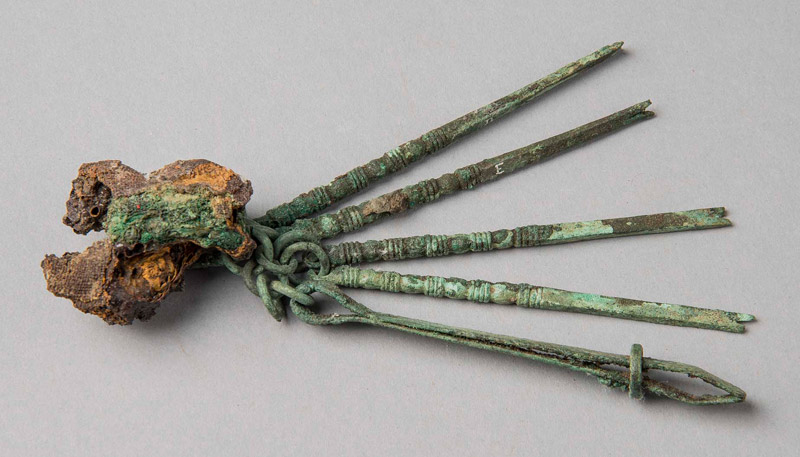Hooks were used for seizing tissue, tumors, and tonsils. There were two main kinds: sharp hooks and blunt hooks. Sharp hooks were used to hold open the edges of a wound, giving the surgeon space to operate; blunt hooks were used for more unobtrusive procedures such as raising veins. For removing stones from the bladder or urethra, a lithotomy hook was employed. Normally, it would be a blunt hooked spoon, but it could be also a bifurcated blunt hook, like the ones shown here. Also, a set of a forceps and several bifurcated hooks might suggest a similar application.
Hooks

Medical set with forceps and various hooks Bronze 130 x 32 mm (average) Roman Period Rome Walter Dennison, 1909. KM 1485

Bifurcated blunt hook Bronze 95 x 5 mm Roman Period Rome Francis W. Kelsey, 1901. KM 21477
Double-side bifurcated blunt hook Bronze 126 x 7 mm Roman Period Rome Francis W. Kelsey, 1901. KM 21478

